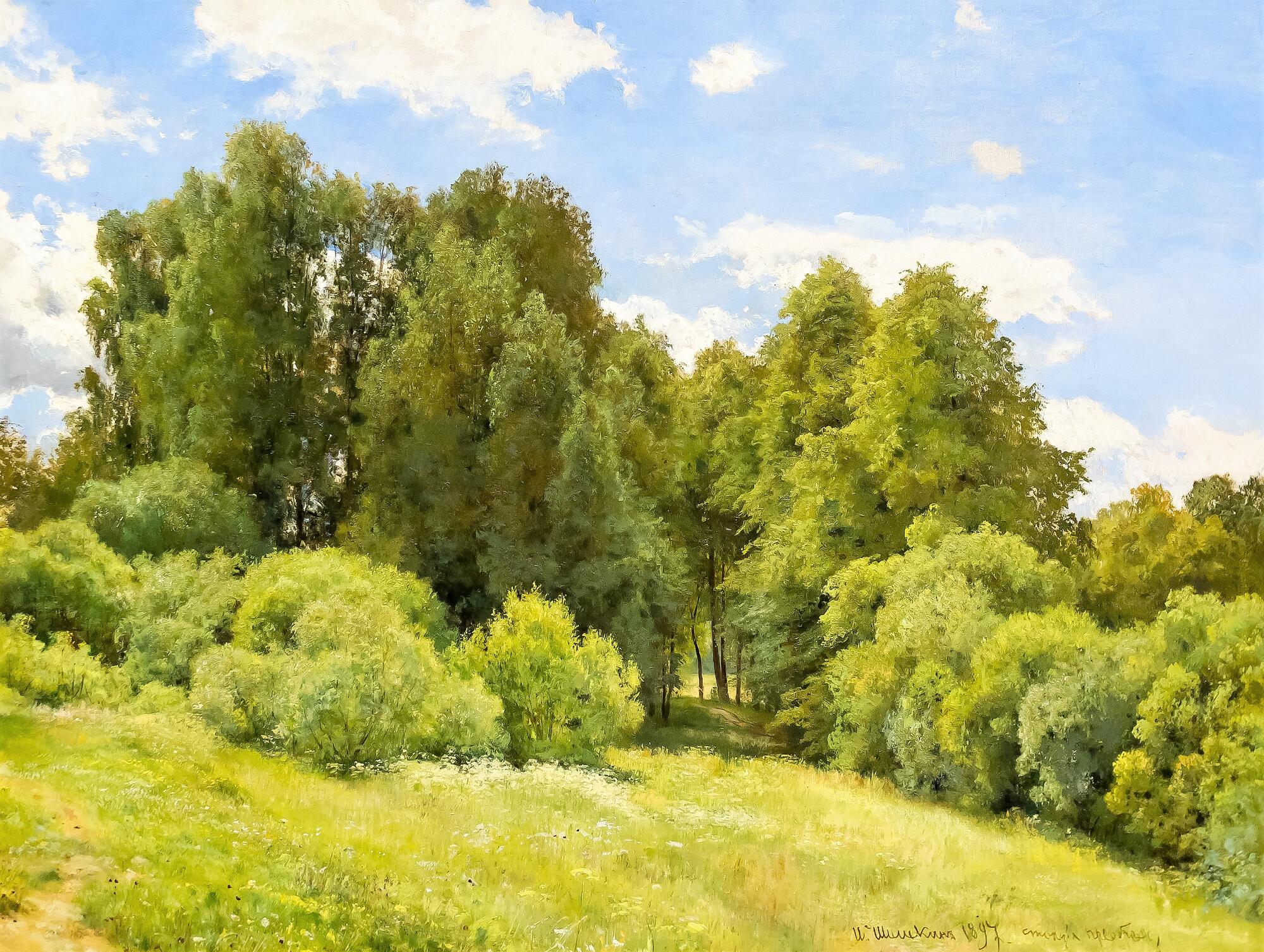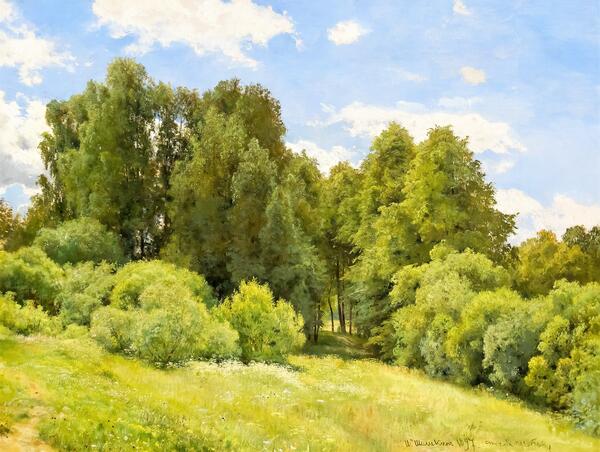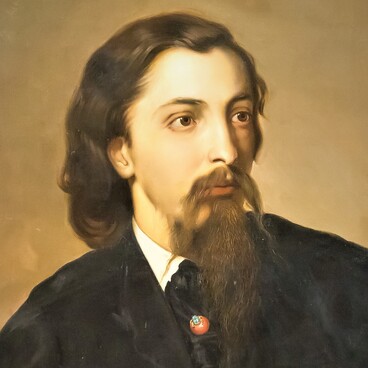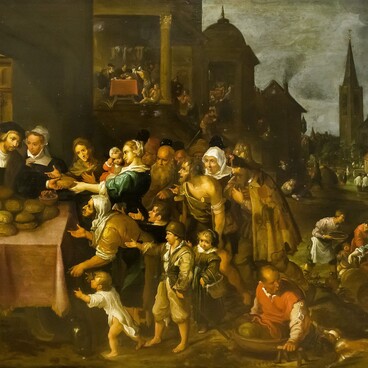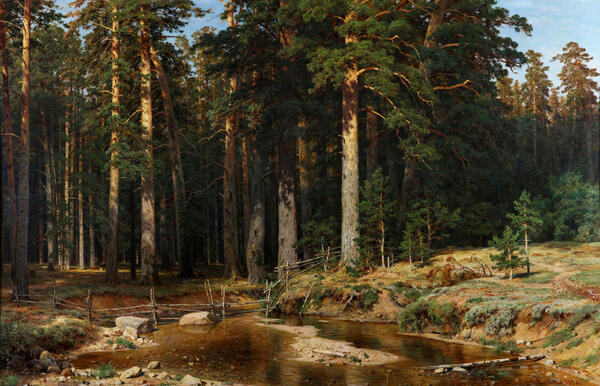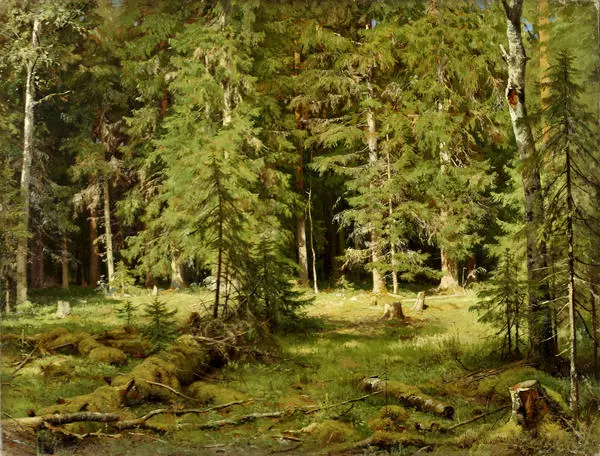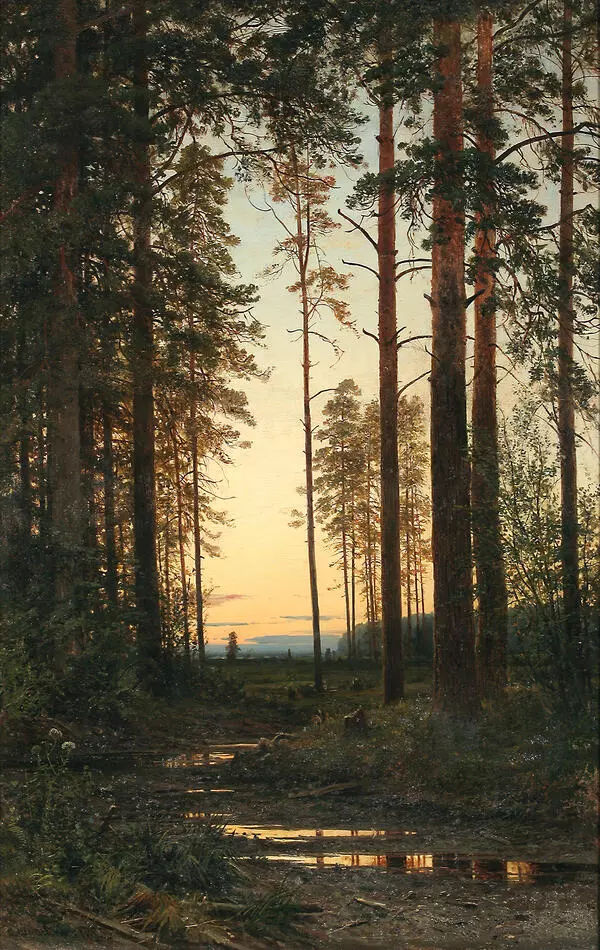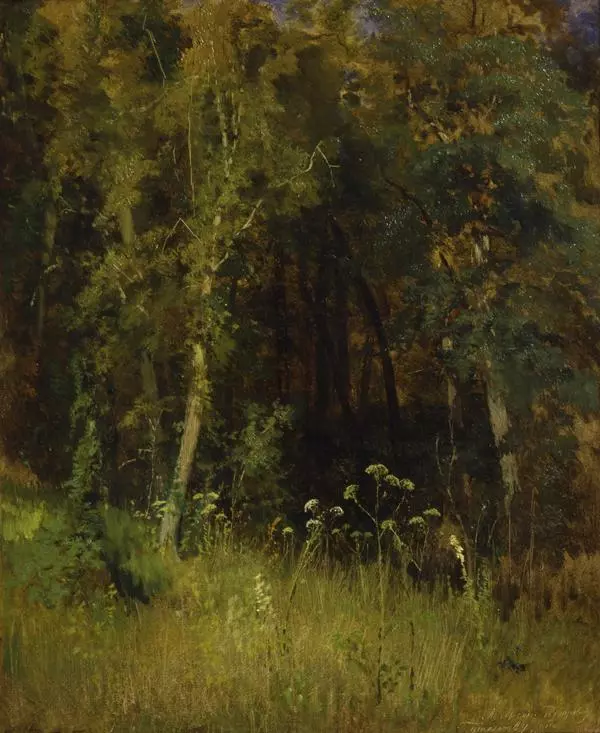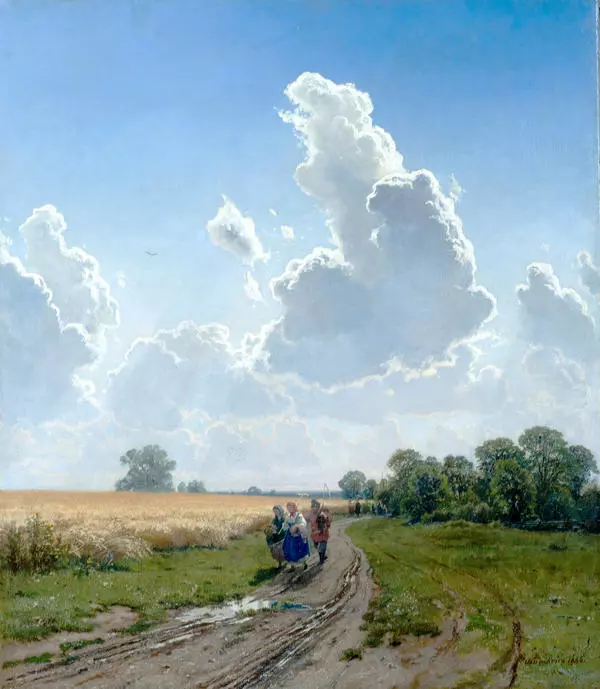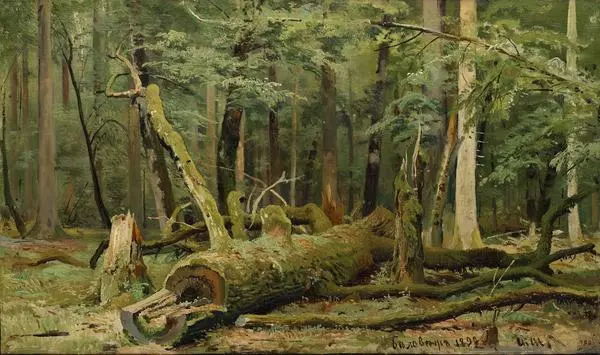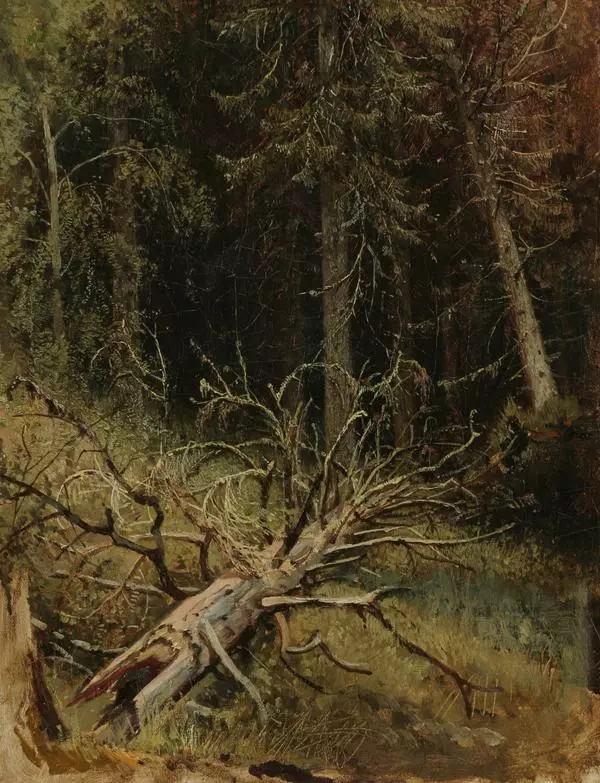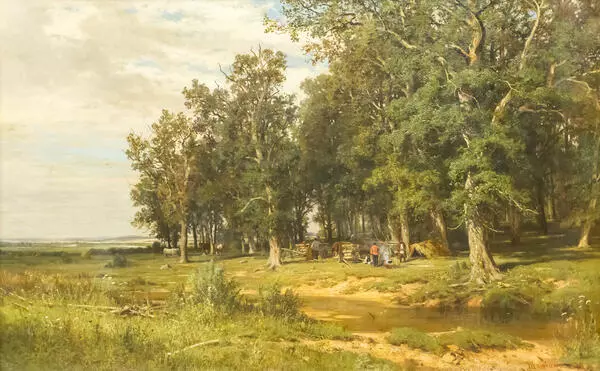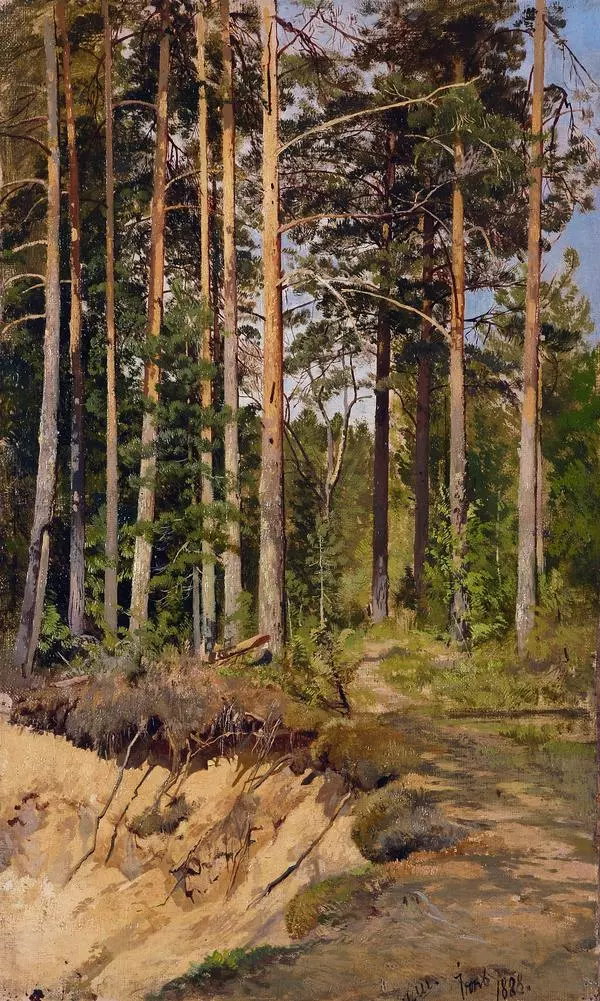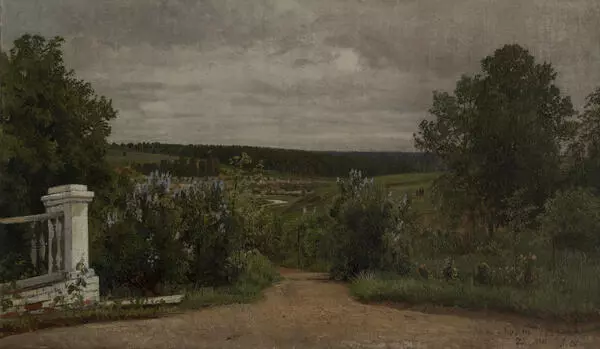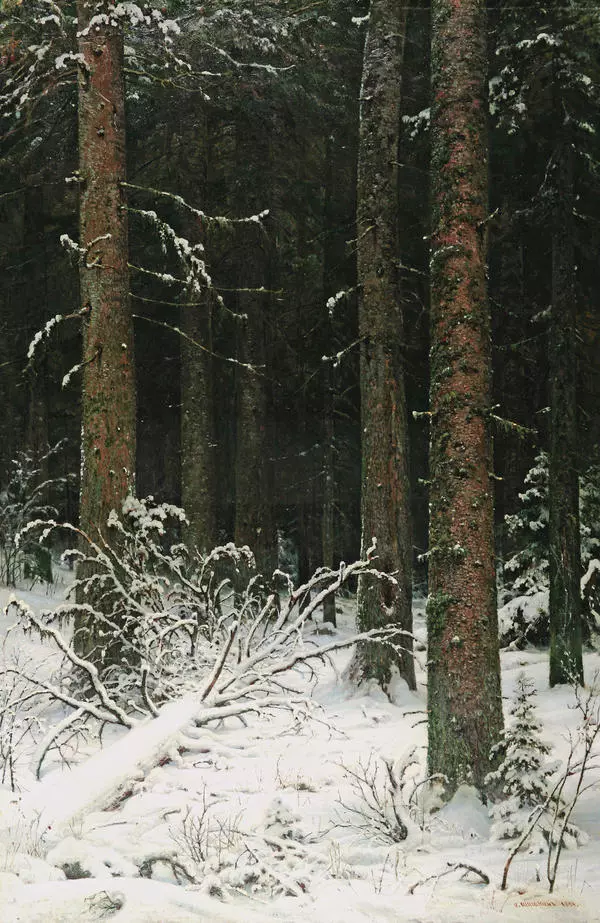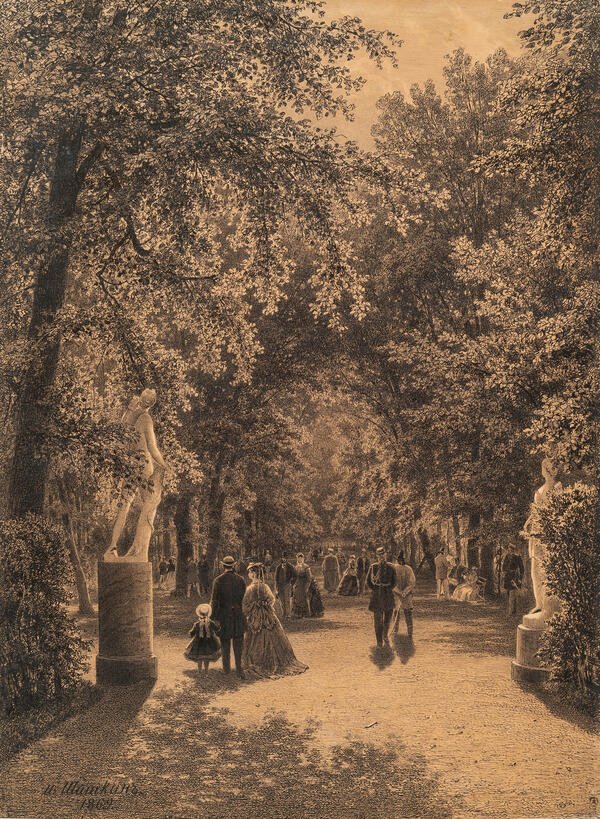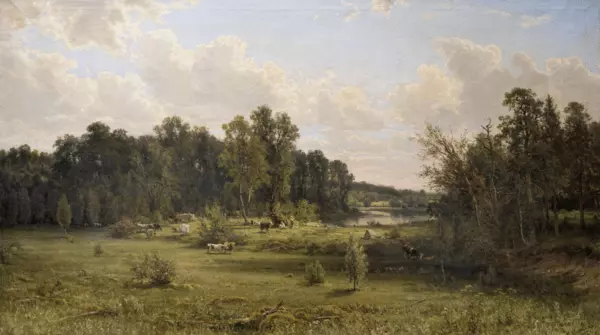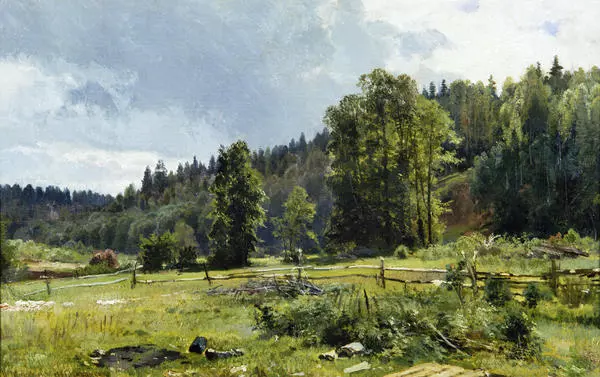Starting from the mid-1880s, Ivan Shishkin decided to introduce a few changes to his style. In that period, he left behind his manner of outlining every small detail (at one point, he was even nicknamed as ‘the accountant of leaves’). Later in life, he learned to paint the nature in a simpler way, choosing better light effects over meticulous depiction of trees and grass. The 1897 ‘Glade’ demonstrated this new and unexpected side to Shishkin’s artwork.
The artist saw the landscape, depicted in this painting, not far from Preobrazhenskaya station, near his estate. He pictured the glade with light and quick brush strokes, trying to preserve the memory of the first impression. This approach allowed him to depict the liveliness of leaves quivering in the summer wind and the warmth of grass lit by the sun. The glade, the trees and the clouds appear to be in perfect harmony, the paints seem to gradually merge and the all-embracing sunlight pours all over the pictorial space. In art, such effect is sometimes called “simultaneous vision”, for it displays the nature as a whole and not as separate fixed elements.
“Glade” is considered one of the best paintings in the museum’s collection. It appeared in Kazan in the autumn of 1898, a year after it was created. The painting participated in the Russian art exhibition at the Kazan Art School. Many professors of the Russian Academy of Arts in Saint Petersburg sent their canvases to take part in the exhibition, including Ivan Shishkin, who submitted ‘Glade’ and ‘At the Summer Cottage.’ Both paintings caught the eye of the Kazan public, but ‘Glade’ was so well-liked that the city authorities asked Shishkin to donate it to the local museum. A telegram granting his permission arrived in Kazan on the last day of his life.
The niece of the painter Alexandra Komarova reminisced about Shishkin in the article dedicated to his memory:
The artist saw the landscape, depicted in this painting, not far from Preobrazhenskaya station, near his estate. He pictured the glade with light and quick brush strokes, trying to preserve the memory of the first impression. This approach allowed him to depict the liveliness of leaves quivering in the summer wind and the warmth of grass lit by the sun. The glade, the trees and the clouds appear to be in perfect harmony, the paints seem to gradually merge and the all-embracing sunlight pours all over the pictorial space. In art, such effect is sometimes called “simultaneous vision”, for it displays the nature as a whole and not as separate fixed elements.
“Glade” is considered one of the best paintings in the museum’s collection. It appeared in Kazan in the autumn of 1898, a year after it was created. The painting participated in the Russian art exhibition at the Kazan Art School. Many professors of the Russian Academy of Arts in Saint Petersburg sent their canvases to take part in the exhibition, including Ivan Shishkin, who submitted ‘Glade’ and ‘At the Summer Cottage.’ Both paintings caught the eye of the Kazan public, but ‘Glade’ was so well-liked that the city authorities asked Shishkin to donate it to the local museum. A telegram granting his permission arrived in Kazan on the last day of his life.
The niece of the painter Alexandra Komarova reminisced about Shishkin in the article dedicated to his memory:
